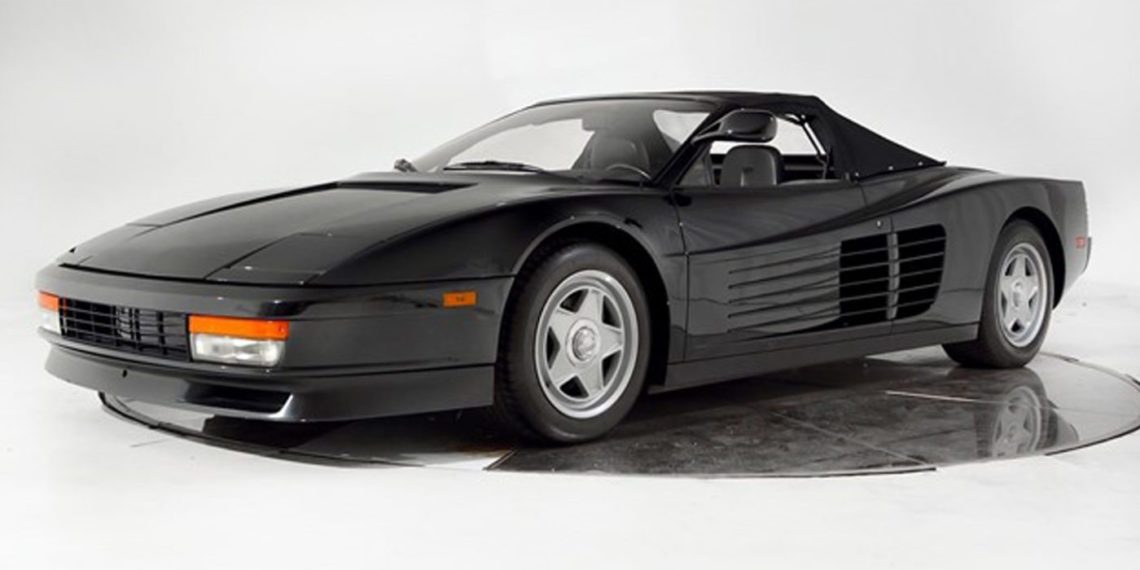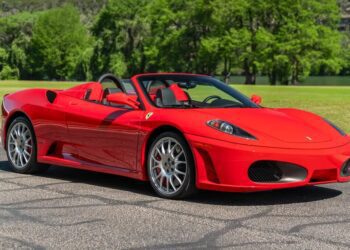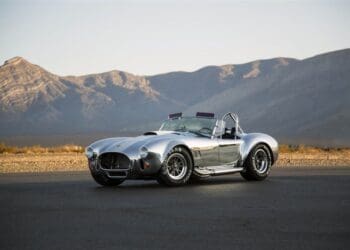Even if you don’t know about the Ferrari Testarossa, you know what it looks like and where it’s been.
For many reasons, the car is a hallowed hallmark of 80’s culture and the complete poster car of a glamourous period that evokes nostalgia for just about anyone, even people who don’t remember living in that period themselves. However, it isn’t just glamor this car is known for, because as with any Ferrari, the Testarossa’s roots are firmly planted in racing and performance, which is why the Testarossa is just as impressive to drive as it is to look at. There are many reasons this car is a Ferrari legend and a modern classic, and all of them make this car just as impressive today.
Ferrari Testarossa Price
How much is a Ferrari Testarossa? Of course, since it’s a car that isn’t made anymore, that can become a complicated question to answer. Especially with its importance in pop culture and status as a classic Ferrari, the Testarossa can command quite a premium on the second-hand market, and also, various factors can affect the price of a car like the Testarossa. A Ferrari Testarossa for sale in 2022 can range pretty significantly depending on condition and year release. On average, a Ferrari Testarossa will run a car enthusiast between $150,000 and $250,000. While that’s quite a bit of money, it remains close to the Ferrari Testarossa MSRP of $181,000, and it’s worth considering that the Testarossa car combines being a classic, being a Ferrari, and being an instantly recognizable pop culture icon for many.
MUST READ: LeBron James Buys Wife Ferrari Testarossa
The original Ferrari Testarossa price was fairly steep for its time, at $181,000 in 1989, and was also subject to a gas-guzzler tax of $2,700. Famously, the Testarossa Spider (the only official convertible version of the Testarossa in 1986) was auctioned off by Fiat chairman Gianni Agnelli’s family in 2016. The car was a commission for Agnelli’s twenty years of chairmanship for the company.

The Ferrari Testarossa was initially in production from 1984–1996. The luxe sports car was designed by Leonardo Fioravanti, Ian Cameron, Guido Campoli, Emanuele Nicosia, and Diego Ottina at Pininfarina S.P.A. Its predecessor was the Ferrari BB 512i and the Testarossa was succeeded by the Ferrari 550 Maranello. Including all of the revised variations that were designed throughout the Ferrari Testarossa’s ten-year production run, approximately 10,000 cars were produced. This makes the Ferrari Testarossa one of Ferrari’s most mass-produced sports car models.
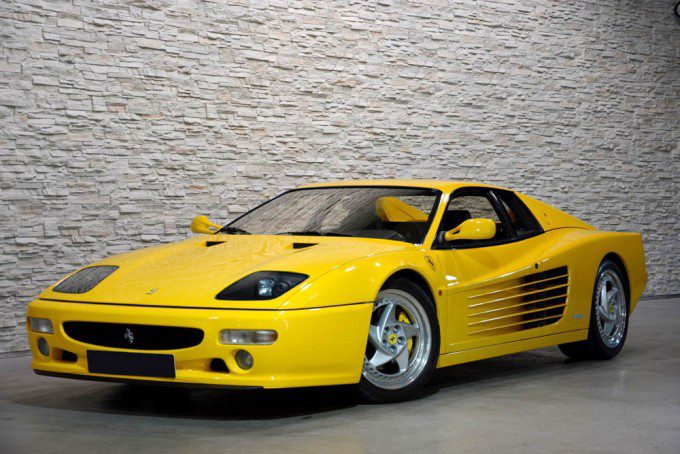
Ferrari Testarossa Review
Many different types of Ferrari Testarossa reviews focus primarily on the aesthetics of the vehicle, which is somewhat understandable– it’s a gorgeous sports car whose image adorned the walls of auto shops and teenage bedrooms for many years. Its likeness was even featured in video games like Grand Theft Auto III, Micro Machines V3, and Impact Racing many years ago. So what is it like to actually drive one? Well, it’s difficult to say. Many Testarossas were kept in collection storage and eventually experienced hose and seal deterioration.
From what reviews can be found, the Testarossa’s 12-cylinder engine was quite loud, which only added to the car’s appeal, and with the Ferrari Testarossa horsepower being a strong 385, it had bite to match its bark. It is also quite fast for its time. (Which we’ll dive into later on in this guide.) The Testarossa Spider, a variation of the original Testarossa, was only produced as a single model for Gianni Agnelli. Ferrari diehards constantly requested that the Spider see mass production, but Ferrari refused. This was because the variant had significant structural and spatial challenges that would be too difficult and costly to resolve for mass production.
| Ferrari Testarossa Specs | |
| Price: | $181,000 |
| Engine: | 4.9-liter flat-12 |
| Transmission: | 5-speed dog-leg Manual |
| Horsepower: | 385 hp |
| Torque: | 361 lb/ft |
| 0-60 mph: | 5.0 s |
| 1/4 mile: | 12.7 s |
| Top Speed: | 180 mph |
| Weight: | 3,766 lbs |
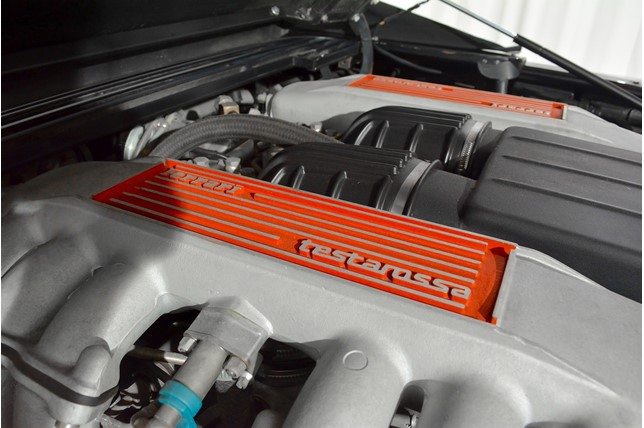
Ferrari Testarossa Engine
The Ferrari Testarossa engine was a 4.9 L Tipo F113 and Tipo 113 B flat-12. Its engine layout with rear mid-body and featured rear-wheel drive. It was also mated exclusively as a 5-speed manual transmission. The naturally aspirated 4.9 L (4,943 cc) 180 degree Ferrari flat-12 engine featured DOHC 4 valves per cylinder, totaling forty-eight valves per vehicle. It is lubricated through a dry-sump system. The Ferrari Testarossa engine had a compression ratio of 9.20:1.
The engine and the Ferrari Testarossa specs in general meant business, as these features all combine provided a maximum power output of 287 kW (390 PS; 385 hp) at around 6,300 rpm. It also had a maximum torque of 490 N⋅m (361 lb/ft) at 4,500 rpm. Initially, U.S. editions of the Ferrari Testarossa had noticeably less power at 283 kW (385 PS; 380 hp). The Testarossa is capable of accelerating from zero to 62 miles per hour in about 5.3 seconds and up to 50 miles per hour in just over five seconds. The top speed of a Testarossa is believed to be around 180 miles per hour.
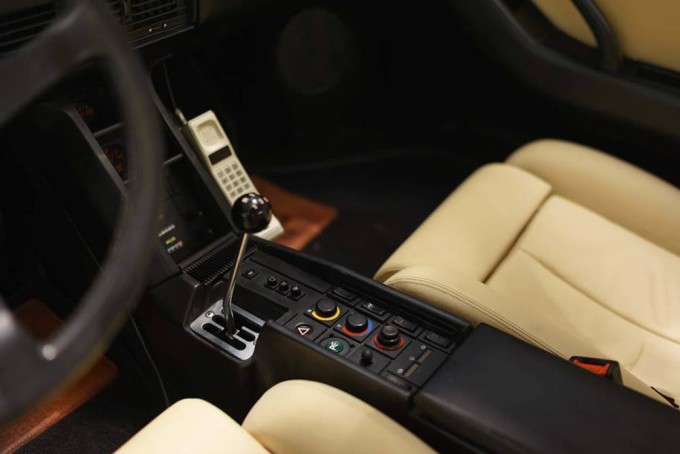
Ferrari Testarossa Transmission
The Ferrari Testarossa 5-speed manual transmission is rear-mounted in all versions and editions of the vehicle. In keeping with tradition, it would be the last Ferrari to have a dog-leg first gear, the logic being that when racing the driver would be in 2nd and 3rd primarily. With the first gear being at the bottom left, the reverse gear is locked out at the upper left.
With a strong on-center feel, classic Italian transmissions require strong arms. Compared to any modern car, it is a visceral experience feeling and hearing the shifter slide through the gates. A propeller shaft connects the output to the differential, and it acts as a fuse. When abused, the shaft polishes the differential and it can snap under hard launches. Given the cost of a full rebuild, go easy and double-clutch as often as possible.
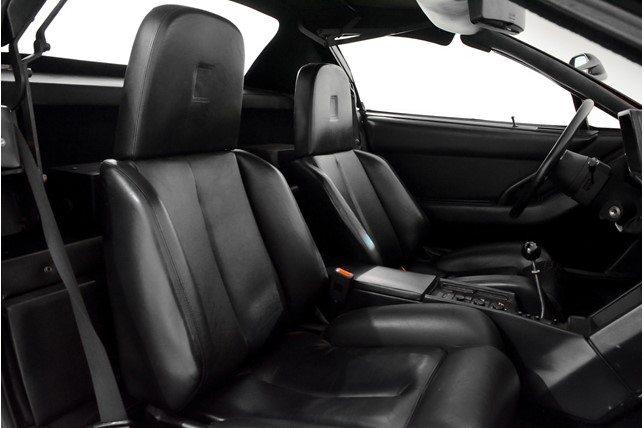
Ferrari Testarossa Interior
The Ferrari Testarossa interior was nothing particularly special, though many of its features were common during its production time in other luxury sports vehicles. Most versions of the vehicle came with interior leather upholstery in either red, brown, white, or black. Many Ferrari enthusiasts have taken to customizing the interior of their Testarossas.
The Testarossa was also designed to be a bit larger than its predecessor, leading to an almost comically wide interior. Still, this provided for more luggage space without compromising speed or weight. The front forward-opening hood feature carpeted storage space. The Testarossa also had twin side radiators that were close to the rear engine, rather than a radiator in the front, which made for a cooler cabin temperature.
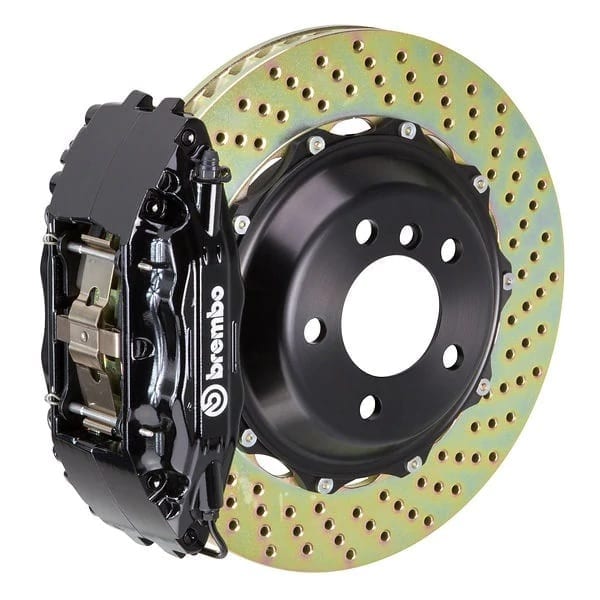
Ferrari Testarossa Brakes
The Ferrari Testarossa brakes boast a diameter of 12.4 inches for the front and rear brake diameters of 12.20 inches. Currently, there are many aftermarket Ferrari Testarossa performance brake calipers, pads, and rotors available. Because the original brakes on Testarossas are relatively easy to service with use, many car enthusiasts have taken to creating and installing heavy-duty brakes more suitable for today’s challenging tracks.
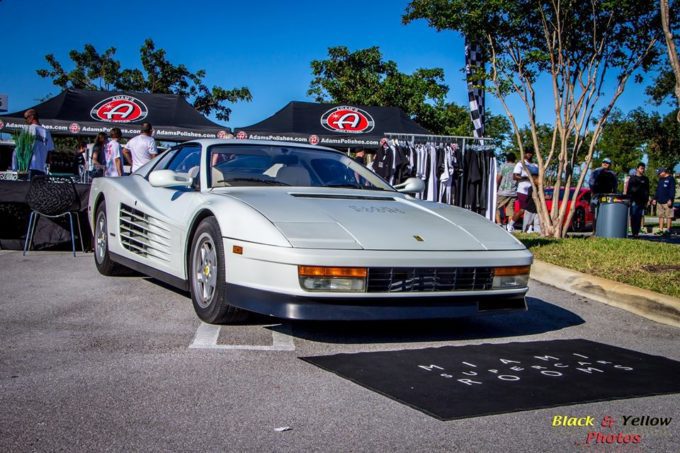
Ferrari Testarossa Standout Features
While the Ferrari Testarossa was likely very fun to drive in its original days, the model itself has become famous for its sleek, unique, and edgy look. The Ferrari Testarossa from Miami Vice was one example of this. The American crime drama television series aired from 1984 to 1990. In a famous lawsuit, Ferrari demanded that the production team behind the show would stop producing (and then selling) fake Ferrari replicas during filming.
MUST READ: Miami Vice Ferrari Testarossa Set to Cross the Block at Mecum
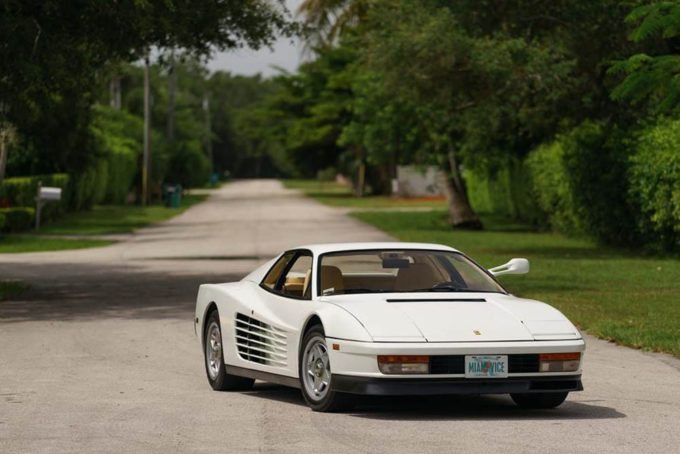
In an amicable agreement between the two entities, Ferrari decided to offer two free 1986 Testarossas to the team as long as the replicas were destroyed. In a famous season in the show’s third season, Crockett is given a sharp white 1986 Ferrari Testarossa with a Florida license plate to complete his cover as a high-rolling drug dealer. A legendary car in itself, the Ferrari Testarossa was known for having a unique look, a decent speed for its time, and for being so widely produced by Ferrari.

